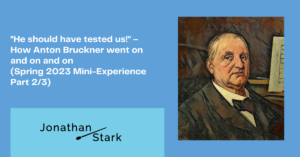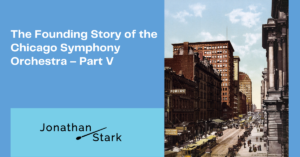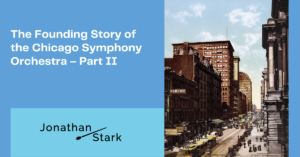This is part 2 of the Winter 2023 Mini-Experience. Part 1 (“What collaboration can trigger…”) can be found here.
In Part 1, you learned that Modest Mussorgsky died the same year Maurice Ravel got his first piano lessons. Ravel wanted to become a pianist – however, his motivation was repeatedly dampened by setbacks. First, he was only accepted into the preparatory class at the conservatory (instead of the regular studies), then he had to realize that he could not keep up with the virtuosity of his fellow students, and finally he failed the intermediate exams. As a result, he had to leave the piano class.
What was a disaster for the young Ravel is good fortune for us today: for after his unsuccessful career as a pianist, Ravel turned to composing and – most importantly! – to orchestration.
Orchestration – that is, setting up a composition for orchestra – is a high art. In orchestrating, you give color to a piece. It’s like painting a black-and-white picture.
With his orchestration of Mussorgsky’s Pictures at an Exhibition, Ravel was to revolutionize the art of orchestration. Such brilliance of sound, such richness of color, such absolute knowledge of each orchestral instrument – it is simply perfection. (We’ll look at examples later in this article series).
But there is one question: Why did Ravel choose Mussorgsky’s Pictures at an Exhibition of all works to orchestrate? Actually, there would have been many reasons against it…
…first of all, Mussorgsky was not really a well-known composer, certainly not in France. Besides, there was no shortage of pieces in Paris that Ravel could have orchestrated: Ravel’s famous contemporary Claude Debussy, for example, wrote piano pieces that were played a lot in Paris and would have been suitable for orchestration.
So why Mussorgsky?
Well, in 1922 (Ravel was by now 47 years old) three issues came together that led to Ravel orchestrating Pictures at an Exhibition:
1) A commission helps.
Who can afford to write for the drawer? A commission can always provide a motivational boost. Ravel received the commission to orchestrate Pictures at an Exhibition from the conductor Sergei Kusevitsky, who also conducted the premiere of the orchestral version.
2) Mussorgsky had “advocates” in France.
A couple – the singer Marie Olénine and her husband Pierre d’Alheim – wanted to make Mussorgsky’s music known in France. Therefore, starting in 1896, they gave lectures on Mussorgsky’s music in Paris. In the audience sat the very young Maurice Ravel, who later wrote in a letter to Olénine:
“I will never forget the day, already so long ago, when you and your husband revealed to us the work of Mussorgsky.”
3) Mussorgsky’s piano piece NEEDS an orchestra!
Mussorgsky did compose his Pictures at an Exhibition for piano, but he exploited the full range of the piano sound. In many places, therefore, one has the feeling that they absolutely belong in an orchestra!
For example, Mussorgsky has monophony and polyphony alternate like dialogues….
…is not afraid to use less conventional registers of the piano (for example, only the high one)…
…and also uses the full piano sound:
Mussorgsky’s particular style of writing for piano has resulted in many arrangements of Pictures at an Exhibition over the years (there is even one by Emerson, Lake and Palmer…). Ravel’s arrangement for orchestra, however, remains by far the most frequently performed to this day. This, of course, raises another question: Why? 😊
Because Ravel does much more than simply “transfer” a piano composition to the orchestra. Instead, he “thinks” the orchestral sound.
More on this in part 3.







